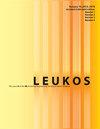Assessment of Window Size and Layout Impact on a View Quality Perception in a Virtual Reality Environment
IF 2.6
2区 工程技术
Q2 CONSTRUCTION & BUILDING TECHNOLOGY
引用次数: 0
Abstract
ABSTRACTWindow views are key factors that affect buildings’ occupants psychological and physiological comfort and wellbeing. Window design should consider the holistic impacts on building energy, lighting performance, and the connection to the outdoors provided by the view which is usually overlooked. In this study, view perception, stress recovery, physiological, and psychological affect were evaluated in virtual environments of five different conditions varying the physical dimensions of a window located in the same office space with an urban view. This allowed three window-to-wall ratios (i.e. 10%, 20%, and 30%) and two different window layouts (i.e. narrow and wide) to be compared. Twenty-five participants were recruited. Subjective self-assessments on view perception (e.g. content and complexity), self-assessment and physiological measures (e.g. skin conductance and heart rate variability) stress recovery besides psychological affect were measured. Participants performed a Stroop-test to induce stress that was immediately followed by a period of recovery facilitated by exposure to one of the five window conditions. Results showed that increased window size advocated higher view perception assessments, increased stress recovery, and positive psychological affect. Measurements of skin conductance and heart rate variability also corroborated these findings. Differences in window layout were also revealed, but only for 10% WWRs. Therefore, WWR is not a reliable indicator for view perception for small window sizes, indicating that layout preference is dependent on window size. This study highlights the importance of considering view perception for occupant health and wellbeing when sizing window openings, since these may not necessarily align with other design criteria.KEYWORDS: Window viewvisual perceptionvirtual reality (VR)daylightingstress recovery AcknowledgmentsThe authors would like to extend their thanks to Al-Zaytoonah University of Jordan and to all participants who took part in the experiment.Disclosure statementNo potential conflict of interest was reported by the author(s).Additional informationFundingThis work was supported by the Engineering and Physical Sciences Research Council, UK [grant number EP/S030786/1].在虚拟现实环境中评估窗口大小和布局对视图质量感知的影响
摘要窗景是影响建筑居住者心理和生理舒适与健康的关键因素。窗户设计应考虑对建筑能源、照明性能的整体影响,以及通常被忽视的与室外景观的联系。在这项研究中,在五种不同条件下的虚拟环境中,评估了景观感知、压力恢复、生理和心理影响,这些条件改变了位于同一办公空间的窗户的物理尺寸,并具有城市景观。这样可以比较三种窗墙比(即10%,20%和30%)和两种不同的窗户布局(即窄窗和宽窗)。招募了25名参与者。在心理影响的基础上,测量主观自我评价(如内容和复杂性)、自我评价和生理测量(如皮肤电导和心率变异性)。参与者进行了一个stroop测试,以诱导压力,紧接着是一段时间的恢复,通过暴露在五个窗口条件之一促进。结果表明,增加窗口尺寸可提高观感评价,促进应激恢复和积极的心理影响。皮肤电导和心率变异性的测量也证实了这些发现。窗口布局的差异也被发现,但只有10%的WWRs。因此,对于小窗口大小的视图感知,WWR不是一个可靠的指标,这表明布局偏好依赖于窗口大小。这项研究强调了在调整窗户开口尺寸时考虑居住者健康和福祉的观点感知的重要性,因为这些可能不一定与其他设计标准一致。关键词:窗景视觉感知虚拟现实(VR)采光应激恢复作者感谢约旦Al-Zaytoonah大学以及所有参与实验的参与者。披露声明作者未报告潜在的利益冲突。本研究得到了英国工程与物理科学研究委员会的支持[拨款号EP/S030786/1]。
本文章由计算机程序翻译,如有差异,请以英文原文为准。
求助全文
约1分钟内获得全文
求助全文
来源期刊

Leukos
工程技术-光学
CiteScore
7.60
自引率
5.60%
发文量
19
审稿时长
>12 weeks
期刊介绍:
The Illuminating Engineering Society of North America and our publisher Taylor & Francis make every effort to ensure the accuracy of all the information (the "Content") contained in our publications. However, The Illuminating Engineering Society of North America and our publisher Taylor & Francis, our agents, and our licensors make no representations or warranties whatsoever as to the accuracy, completeness, or suitability for any purpose of the Content. Any opinions and views expressed in this publication are the opinions and views of the authors, and are not the views of or endorsed by The Illuminating Engineering Society of North America and our publisher Taylor & Francis. The accuracy of the Content should not be relied upon and should be independently verified with primary sources of information. The Illuminating Engineering Society of North America and our publisher Taylor & Francis shall not be liable for any losses, actions, claims, proceedings, demands, costs, expenses, damages, and other liabilities whatsoever or howsoever caused arising directly or indirectly in connection with, in relation to, or arising out of the use of the Content. Terms & Conditions of access and use can be found at http://www.tandfonline.com/page/terms-and-conditions .
 求助内容:
求助内容: 应助结果提醒方式:
应助结果提醒方式:


